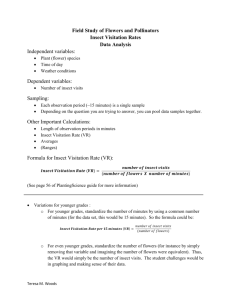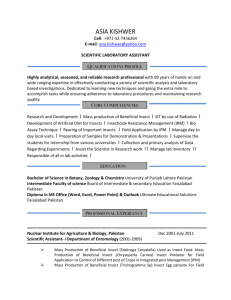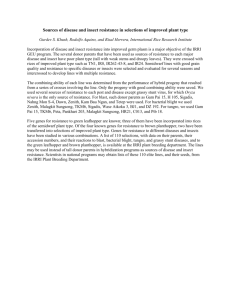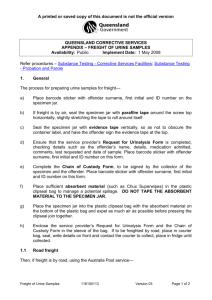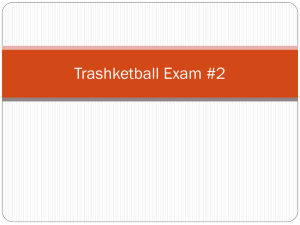9/10 CEC Biology Due Date: September 29, 2015 Collection
advertisement
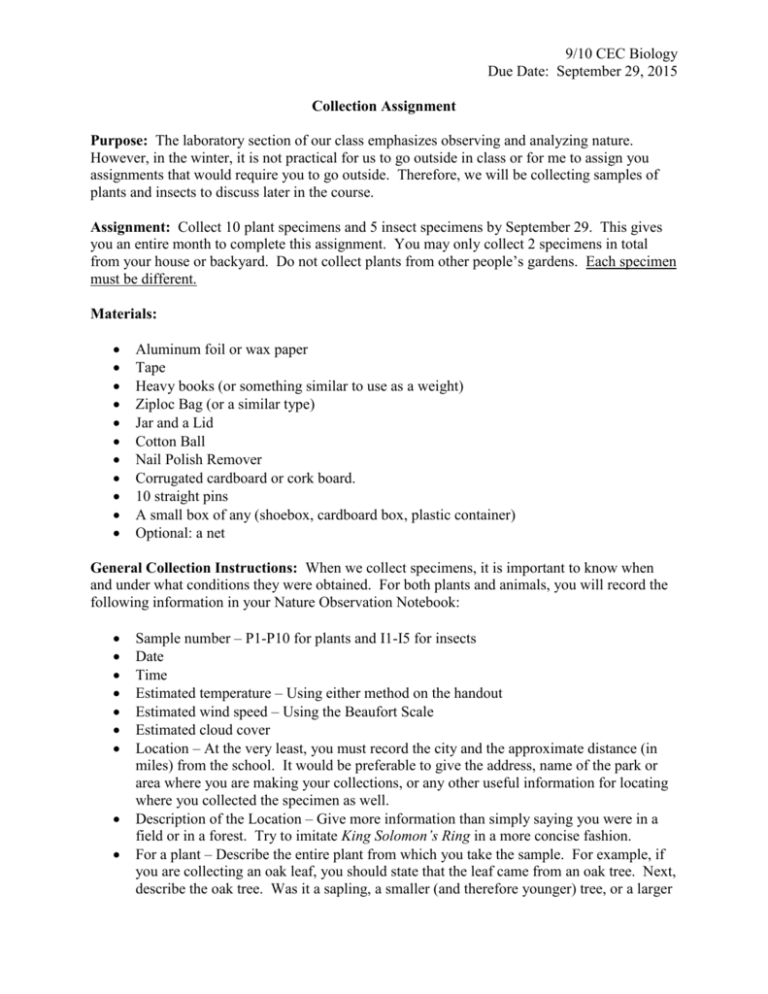
9/10 CEC Biology Due Date: September 29, 2015 Collection Assignment Purpose: The laboratory section of our class emphasizes observing and analyzing nature. However, in the winter, it is not practical for us to go outside in class or for me to assign you assignments that would require you to go outside. Therefore, we will be collecting samples of plants and insects to discuss later in the course. Assignment: Collect 10 plant specimens and 5 insect specimens by September 29. This gives you an entire month to complete this assignment. You may only collect 2 specimens in total from your house or backyard. Do not collect plants from other people’s gardens. Each specimen must be different. Materials: Aluminum foil or wax paper Tape Heavy books (or something similar to use as a weight) Ziploc Bag (or a similar type) Jar and a Lid Cotton Ball Nail Polish Remover Corrugated cardboard or cork board. 10 straight pins A small box of any (shoebox, cardboard box, plastic container) Optional: a net General Collection Instructions: When we collect specimens, it is important to know when and under what conditions they were obtained. For both plants and animals, you will record the following information in your Nature Observation Notebook: Sample number – P1-P10 for plants and I1-I5 for insects Date Time Estimated temperature – Using either method on the handout Estimated wind speed – Using the Beaufort Scale Estimated cloud cover Location – At the very least, you must record the city and the approximate distance (in miles) from the school. It would be preferable to give the address, name of the park or area where you are making your collections, or any other useful information for locating where you collected the specimen as well. Description of the Location – Give more information than simply saying you were in a field or in a forest. Try to imitate King Solomon’s Ring in a more concise fashion. For a plant – Describe the entire plant from which you take the sample. For example, if you are collecting an oak leaf, you should state that the leaf came from an oak tree. Next, describe the oak tree. Was it a sapling, a smaller (and therefore younger) tree, or a larger Collection Assignment, 2 (and therefore older) tree. You may not know the exact species to which your sample belongs. That is perfectly fine, part of what we will be doing in class is identifying the species. Simply describe the plant to the best of your abilities. For an insect – Describe where the insect was and what it was doing when you caught it. Was it a fly that was trapped in your house? A caterpillar crawling on a plant? What type of plant was it? You may not know the exact species to which your sample belongs. That is perfectly fine. Simply describe the insect to the best of your abilities. Example Collection Entry: Sample Number: I3 Date: 8/27/2015 Time: 5:00 pm Temperature: 60º F Wind Speed: 0 [on the Beaufort Scale], 0 mph Cloud Cover: 20% [approximately 20% of the sky is covered with clouds] Location: Window on the Waterfront Park, Central Ave, Holland, MI 49423. 35 minutes from Grand Rapids. Description of the Location: A wooded area with a trail through it located near the south edge of Lake Macatawa Marsh. Many of the trees were older. The trees were not dense enough to block out all of the light. The ground of the area was covered with twigs, dead leaves, and wild flowers. It had rained recently, so the ground was damp but not muddy. Insect: The insect is small and appears to be a wasp [this is an example of where it is okay for you to be incorrect. If in reality you did not collect a wasp, you will not lose any points. Simply give your best hypothesis]. It was flying near some of the ground foliage in the wooded area. [Bracketed comments are my notes to you. They would not be included in an actual entry.] These collection observation entries may not take up a whole page of your notebook. It is acceptable to have more than one collection entry per page. Leave three blank lines in between each entry. Procedure for collecting plant samples: 1. Parts of plants that should be collected include flowers, leaves, blades, ect. Actually pick a leaf or flower, do not just pick one off the ground that has already dried. Do not bring in an entire plant or a twig. All specimens should be able to fit into a single gallon Ziploc bag (it is acceptable if you use a different size bag). 2. Collect the specimen. Record the appropriate information in your Nature Observation Journal. 3. Place the specimen between two pieces of wax paper or aluminum foil. Tape the edges shut. Label the sample as P1-P10 so that you will know which collection entry corresponds to it. Collection Assignment, 3 4. Place the wrapped sample between two heavy books. Leave the sample between the books for several days, until it is pressed flat and is dry. 5. When the sample is flat and dry, place it into the Ziploc bag. 6. Make sure to write your name, the course, and the date on the bag. 7. All samples should be kept in the same bag. Procedure for collecting insect samples: 1. It is acceptable to collect any insect, unless it belongs to somebody else. 2. Soak the cotton ball in nail polish remover and place it in your jar. 3. Catch the insect and place it in your jar. The nail polish remover will put it to sleep and then it will die (this may take a few minutes). 4. Make your collection entry. 5. Once the insect is dead, pin it through the body to the piece of cardboard. Next to the pin, label the specimen I1-I5 so that you will know which collection entry corresponds to it. 6. Make sure to write your name, the course, and the date on the cardboard. 7. When you bring your collection to school, the cardboard with insects should be placed in a box with a lid. On September 25: Bring your bag of plant samples, cardboard of insect samples, and Nature Observation Journal to class. Ms. Kozack will be collecting all of these. If you would like to drop your specimens off before Mass, Ms. Kozack will be in her room from 7:00-7:30. If you would like your box back, please label it with a note containing your name. After grading the collection assignment, Ms. Kozack will return the boxes.


